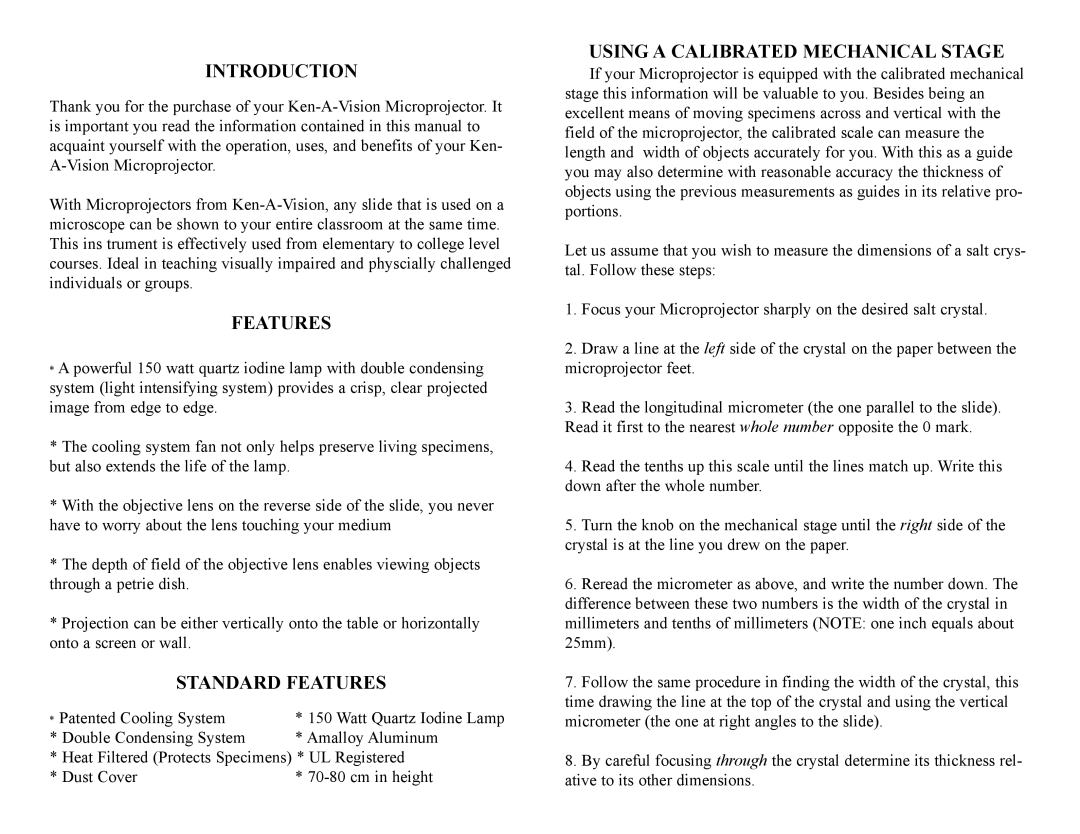X1000 specifications
Ken-A-Vision X1000 is an advanced educational microscope that integrates state-of-the-art technology, designed to enhance the learning experience in both classroom and laboratory settings. With its robust features and user-friendly interface, the X1000 is ideal for students, educators, and professionals alike.One of the most notable features of the Ken-A-Vision X1000 is its high-resolution imaging capability. It utilizes a premium 5 megapixel camera, allowing users to capture crystal-clear images and videos of specimens in real time. The camera is paired with advanced optical components, providing excellent light transmission and clarity for detailed observations, making it perfect for both biological and materials science applications.
Equipped with LED illumination, the X1000 offers adjustable brightness levels, ensuring optimal viewing conditions for various types of samples. This feature not only prolongs the life of the light source but also reduces eye strain during extended use, enhancing the comfort of the user over lengthy viewing sessions.
The Ken-A-Vision X1000 is designed with versatility in mind. It includes multiple magnification options ranging from 40x to 1000x, which can be easily selected through a rotating turret. This flexibility allows users to switch between low and high magnification quickly, facilitating comprehensive examinations of specimens from different perspectives.
Another significant characteristic of the X1000 is its compatibility with various digital tools and applications. It supports plug-and-play functionality with simple USB connectivity to computers and laptops, enabling users to easily transfer images and videos for documentation or further analysis. This feature supports a wide range of educational software applications, making it an ideal choice for digital learning environments.
The microscope is also built with durability in mind. Its sturdy construction can withstand the rigors of frequent use in educational institutions while maintaining performance reliability. Moreover, the sleek and ergonomic design of the X1000 ensures ease of handling, allowing for comfortable operation without compromising functionality.
In summary, the Ken-A-Vision X1000 stands out as a premier educational microscope, combining high-resolution imaging, adjustable LED illumination, versatile magnification options, and digital compatibility into a user-friendly, durable design. Whether in a classroom or research facility, the X1000 is equipped to support and enhance the study of microscopic life and materials, making it an invaluable tool for exploration and discovery.
